 In 1963, Philips Electronics officially introduced the "compact cassette," which contained a length of audio tape approximately 3.15 millimeters wide that ran at 1-7/8 inches per second. It was intended to replace the bulkier reel-to-reel tape and be used for dictation, but over the next 50 years, it would prove to be far more versatile. Lou Ottens, shown here, led Philips' team.
In 1963, Philips Electronics officially introduced the "compact cassette," which contained a length of audio tape approximately 3.15 millimeters wide that ran at 1-7/8 inches per second. It was intended to replace the bulkier reel-to-reel tape and be used for dictation, but over the next 50 years, it would prove to be far more versatile. Lou Ottens, shown here, led Philips' team.  One of the cassette's early supporters was Rolling Stones guitarist Keith Richards, who bought an early machine to record off-the-cuff demos. He liked it so much that he used it to record the layered guitar parts for such songs as 1968's "Street Fighting Man" and "Jumping Jack Flash," overloading his machine for distortion. "I wish I could still do that, but they don't build machines like that anymore," he wrote in his memoir, "Life."
One of the cassette's early supporters was Rolling Stones guitarist Keith Richards, who bought an early machine to record off-the-cuff demos. He liked it so much that he used it to record the layered guitar parts for such songs as 1968's "Street Fighting Man" and "Jumping Jack Flash," overloading his machine for distortion. "I wish I could still do that, but they don't build machines like that anymore," he wrote in his memoir, "Life."  For more than a decade, the cassette's chief competition in the portable tape market was the 8-track cartridge, invented in 1964. Eight-tracks were divided into four programs, each with two-track stereo (hence 8 tracks). Automobile manufacturers adopted the 8-track quickly, but the format had its flaws -- it wasn't rewindable and the programs sometimes split songs in two. By the late '70s, the cassette had won the tape war.
For more than a decade, the cassette's chief competition in the portable tape market was the 8-track cartridge, invented in 1964. Eight-tracks were divided into four programs, each with two-track stereo (hence 8 tracks). Automobile manufacturers adopted the 8-track quickly, but the format had its flaws -- it wasn't rewindable and the programs sometimes split songs in two. By the late '70s, the cassette had won the tape war. 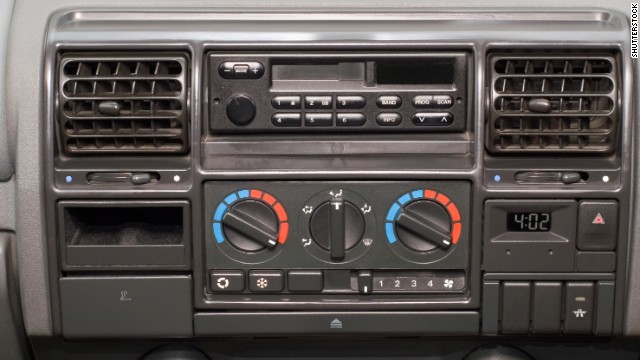 The car was a major driver of the cassette's popularity. Some cars had tried offering phonographs, but the needle would skip with every bump of the road. Cassettes were portable and easy to use. Suddenly, drivers no longer had to listen to their AM/FM radios, but could play tapes of music they liked.
The car was a major driver of the cassette's popularity. Some cars had tried offering phonographs, but the needle would skip with every bump of the road. Cassettes were portable and easy to use. Suddenly, drivers no longer had to listen to their AM/FM radios, but could play tapes of music they liked.  An ongoing problem with cassettes was fidelity -- they just didn't have the same capabilities as LPs or reel-to-reel tapes. But as the technology improved, manufacturers pushed to showcase the cassette's audio possibilities. One of the most famous ad campaigns was from Memorex, a tape manufacturer that used Ella Fitzgerald's vocals to ask the question, "Is it live? Or is it Memorex?"
An ongoing problem with cassettes was fidelity -- they just didn't have the same capabilities as LPs or reel-to-reel tapes. But as the technology improved, manufacturers pushed to showcase the cassette's audio possibilities. One of the most famous ad campaigns was from Memorex, a tape manufacturer that used Ella Fitzgerald's vocals to ask the question, "Is it live? Or is it Memorex?"  Maxell, another tape manufacturer, promoted its fidelity through an iconic photograph of a man sitting in a chair, literally being blown away by the quality (and probably the loudness) of his taped music. For years, makers such as Maxell, TDK and Denon touted the abilities of their tapes and the magnetic substances that coated them.
Maxell, another tape manufacturer, promoted its fidelity through an iconic photograph of a man sitting in a chair, literally being blown away by the quality (and probably the loudness) of his taped music. For years, makers such as Maxell, TDK and Denon touted the abilities of their tapes and the magnetic substances that coated them. 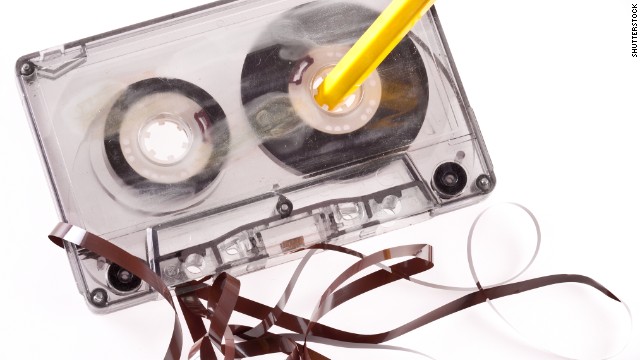 There were drawbacks to cassettes. If your equipment was misbehaving, your tape could start unwinding in the machine, leaving you with a mess. The classic way to get the cassette back to normal was to stick a standard hexagonal pencil in a tape spool and spin it to tighten the tape back together. If the tape was broken, however, you were probably out of luck.
There were drawbacks to cassettes. If your equipment was misbehaving, your tape could start unwinding in the machine, leaving you with a mess. The classic way to get the cassette back to normal was to stick a standard hexagonal pencil in a tape spool and spin it to tighten the tape back together. If the tape was broken, however, you were probably out of luck.  The UK band Bow Wow Wow, led by 14-year-old Annabella Lwin, put out "C-30 C-60 C-90 Go," the first cassette single, in 1980. It was a celebration of taping that had a caustic edge: the lyrics promoted home taping, which record companies associated with piracy.
The UK band Bow Wow Wow, led by 14-year-old Annabella Lwin, put out "C-30 C-60 C-90 Go," the first cassette single, in 1980. It was a celebration of taping that had a caustic edge: the lyrics promoted home taping, which record companies associated with piracy.  The record companies weren't necessarily wrong. Many people borrowed LPs from friends and made their own tapes from them; others took their tape recorders to concerts and made bootleg live recordings, which were then traded or sold on the black market. At least one band, the Grateful Dead, turned the practice into a virtue, however. The Dead encouraged fans to tape their shows, leading to a thriving exchange that continues to this day ... though the technology has changed.
The record companies weren't necessarily wrong. Many people borrowed LPs from friends and made their own tapes from them; others took their tape recorders to concerts and made bootleg live recordings, which were then traded or sold on the black market. At least one band, the Grateful Dead, turned the practice into a virtue, however. The Dead encouraged fans to tape their shows, leading to a thriving exchange that continues to this day ... though the technology has changed. 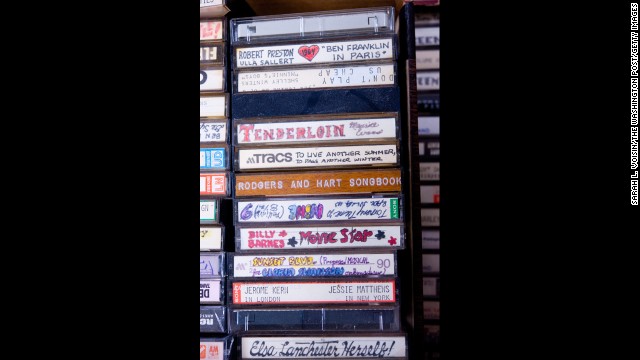 Who needed a radio station or DJ to play music? With cassettes, you could make your own "mix tape" and use it to romance prospective dates, impress new friends or simply entertain yourself. There was an art to the mix tape, from establishing the flow of one song into the next to simply making sure that you didn't run out of time on your C-90. Authors such as Nick Hornby ("High Fidelity") and Rob Sheffield ("Love Is a Mix Tape") romanticized the idea.
Who needed a radio station or DJ to play music? With cassettes, you could make your own "mix tape" and use it to romance prospective dates, impress new friends or simply entertain yourself. There was an art to the mix tape, from establishing the flow of one song into the next to simply making sure that you didn't run out of time on your C-90. Authors such as Nick Hornby ("High Fidelity") and Rob Sheffield ("Love Is a Mix Tape") romanticized the idea.  Sony's introduction of the Walkman in 1979 revolutionized music consumption. No more plugging your headphones into a component stereo; now you could listen to your tapes on the go. The device was the forerunner of other personal music players, including the Discman (Sony's personal CD player) and Apple's iPod.
Sony's introduction of the Walkman in 1979 revolutionized music consumption. No more plugging your headphones into a component stereo; now you could listen to your tapes on the go. The device was the forerunner of other personal music players, including the Discman (Sony's personal CD player) and Apple's iPod.  In some respects, the boombox was the opposite of the Walkman, a giant radio and cassette player with huge speakers. You could, of course, play it in your dorm room, but more common was to tote it around in public, sharing your tastes with the world. It became associated with hip-hop culture: LL Cool J's "Radio" LP featured a boombox on its cover, and Spike Lee's "Do the Right Thing" featured a character, Radio Raheem, who carried one around.
In some respects, the boombox was the opposite of the Walkman, a giant radio and cassette player with huge speakers. You could, of course, play it in your dorm room, but more common was to tote it around in public, sharing your tastes with the world. It became associated with hip-hop culture: LL Cool J's "Radio" LP featured a boombox on its cover, and Spike Lee's "Do the Right Thing" featured a character, Radio Raheem, who carried one around. 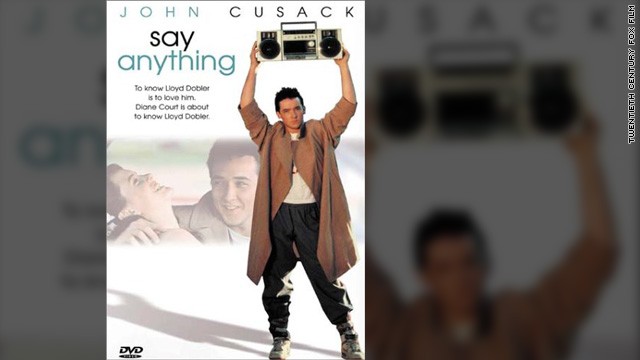 Naturally, the cassette became prominent in popular culture. It played a key role in such movies as "Wayne's World" (where it played "Bohemian Rhapsody" in the car); "Sneakers" (as a voice ID); and, of course, "Say Anything," where John Cusack's boombox will play Peter Gabriel's "In Your Eyes" forever.
Naturally, the cassette became prominent in popular culture. It played a key role in such movies as "Wayne's World" (where it played "Bohemian Rhapsody" in the car); "Sneakers" (as a voice ID); and, of course, "Say Anything," where John Cusack's boombox will play Peter Gabriel's "In Your Eyes" forever.  For all its versatility, the cassette wasn't always a success. The "cassingle," an attempt to replace the 45-rpm single, flopped. The UK magazine SFX marketed itself as "the only music magazine on C-60," but failed in less than a year.
For all its versatility, the cassette wasn't always a success. The "cassingle," an attempt to replace the 45-rpm single, flopped. The UK magazine SFX marketed itself as "the only music magazine on C-60," but failed in less than a year.  With the rise of the CD, introduced in 1982, the cassette started fading from the music scene. In 1992, prerecorded cassettes still accounted for more than half of music sales; four years later, it was down to a quarter. When recordable CDs came out, it seemed like the cassette was doomed -- and downloadable music didn't help.
With the rise of the CD, introduced in 1982, the cassette started fading from the music scene. In 1992, prerecorded cassettes still accounted for more than half of music sales; four years later, it was down to a quarter. When recordable CDs came out, it seemed like the cassette was doomed -- and downloadable music didn't help. 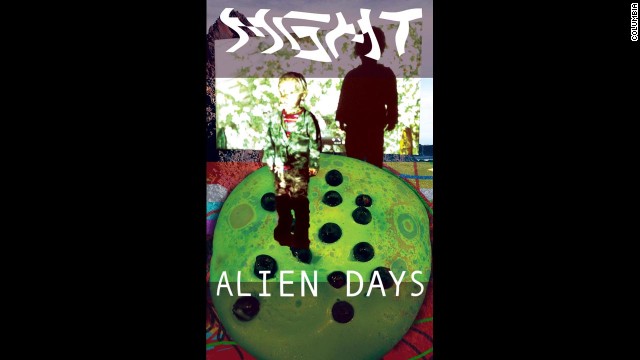 But there's always a place for audio technologies. Underground metal acts latched on to the cassette as a lo-fi medium attuned to their needs. Major labels quickly caught on, and acts such as MGMT released recordings on cassette. Like vinyl, also left for dead a few years ago, cassettes found a new willing market.
But there's always a place for audio technologies. Underground metal acts latched on to the cassette as a lo-fi medium attuned to their needs. Major labels quickly caught on, and acts such as MGMT released recordings on cassette. Like vinyl, also left for dead a few years ago, cassettes found a new willing market.  The new interest has led to Cassette Store Day, celebrated September 7. At least 100 stores participated in the promotion, and a number of artists -- including Suicidal Tendencies and the Flaming Lips -- put out releases. The cassette may never regain the cachet it had in the '80s, but as an audio medium that's cheap, fun and tactile, there's obviously room for a playback.
The new interest has led to Cassette Store Day, celebrated September 7. At least 100 stores participated in the promotion, and a number of artists -- including Suicidal Tendencies and the Flaming Lips -- put out releases. The cassette may never regain the cachet it had in the '80s, but as an audio medium that's cheap, fun and tactile, there's obviously room for a playback.
- Sony has made a cassette tape that can store more than 1,100 iPod Classics
- A single cartridge can hold 185 terabytes of data
- It may be sold, but likely not for personal media
(CNN) -- Forget the cloud, and rework your mental image of those mysterious data centers. Sony has reinvented a tool for storing a mind-numbing amount of data:
A cassette tape.
But this isn't one of those rattling plastic tapes you used to compile your ultimate summer road-trip jams and, too often, were probably forced to rewind with a pencil.
Sony's record-breaking magnetic tape technology allows it to store 180 terabytes of data on a single cartridge. That's the same amount of storage as 1,184 iPod Classics, Apple's roomiest music player, which can hold about 40,000 songs. Using that number, Sony's new cassette could technically store about 47.3 million songs of its own.
That's enough jams for a really long road trip -- say, driving in Atlanta during a snowstorm.
If you're more of a movie buff, think of it this way. The cartridge, which stores 148GB of data per inch of tape, has room for 3,700 Blu-ray discs full of your favorites.
The number obliterates the standing record, set in 2010 when Fuji developed a tape that could hold 35 terabytes of data.
Sony, which worked with IBM on the tape, presented the new technology over the weekend at InterMag Europe, a magnetics conference in Dresden, Germany.
In very simple terms, the technology involves shrinking the microscopic magnetic particles on tape that store data. On average, the new particles are 7.7 nanometers wide. There are 10 million nanometers in one centimeter.
In a news release, Sony said it would like to pursue a commercial use for the new cassette tape technology, as well as continuing to improve it.
But if you're dreaming of someday popping that tape into some sort of digital-age boombox and pushing "play," you may be in for a bit of a disappointment.
Tape has the potential for massive data storage, but it's unwieldy to actually use. Recording to, and retrieving data from, tape takes a lot longer than digital storage devices and players we've become accustomed to in an era of Web streaming.
So, it's a lot more likely that tape will be used to back up huge databases than to save, and play, our music collections. That's too bad. We liked the idea of needing only one cassette for a cross-country drive.
No comments:
Post a Comment